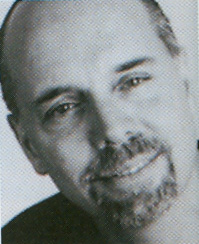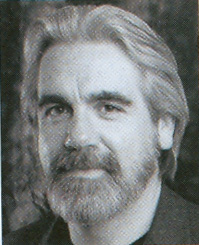 Andrew Schelling (“Rucksack Poetry,”) tells us: “As a poet who is continually indebted to Asia, I’ve been a longtime watcher and writer of haiku. Surely the most recognizable form of poetry on our continent, haiku also seems the most Zen of art forms. Is it a form of poetry or a state of mind? I think a bit of both. As I started to track its arrival here, Haiku America emerged as a personality, a character full of painful karma and complex beauties. In fifty years it’s become native—wise and tricky—a raven, a jackrabbit, or a coyote on the median strip of the highway.”
Andrew Schelling (“Rucksack Poetry,”) tells us: “As a poet who is continually indebted to Asia, I’ve been a longtime watcher and writer of haiku. Surely the most recognizable form of poetry on our continent, haiku also seems the most Zen of art forms. Is it a form of poetry or a state of mind? I think a bit of both. As I started to track its arrival here, Haiku America emerged as a personality, a character full of painful karma and complex beauties. In fifty years it’s become native—wise and tricky—a raven, a jackrabbit, or a coyote on the median strip of the highway.”
 Robert Coe, whose profile on filmmaker David O. Russell appears here, writes, “I was an admirer of the dark comedies of David Russell before I knew he was a serious dharma student and Zen practitioner. Once I learned he was, it made perfect oblique sense to me, if that’s possible. It also reinforced my belief that Buddhism is quietly influencing American popular culture in ways most of us know little about.”
Robert Coe, whose profile on filmmaker David O. Russell appears here, writes, “I was an admirer of the dark comedies of David Russell before I knew he was a serious dharma student and Zen practitioner. Once I learned he was, it made perfect oblique sense to me, if that’s possible. It also reinforced my belief that Buddhism is quietly influencing American popular culture in ways most of us know little about.”
 Michael Carroll’s article on practicing in the workplace appearshere. He notes: “There is too much anger and rudeness in business today—too much arrogance and fear. And because of that, I have come to deeply appreciate colleagues who take the time to work with conflict properly—to listen to, include, and support others; they make the workplace human and decent. Unfortunately, like so many of us, I had often tried to avoid conflict at work, until I realized avoidance only made the conflict worse. It takes skill, humility, timing, confidence—working with conflict basically demands that we be mindful and awake, which is good news. And for me, having been trained in the Mahakala principles only made the good news more apparent.”
Michael Carroll’s article on practicing in the workplace appearshere. He notes: “There is too much anger and rudeness in business today—too much arrogance and fear. And because of that, I have come to deeply appreciate colleagues who take the time to work with conflict properly—to listen to, include, and support others; they make the workplace human and decent. Unfortunately, like so many of us, I had often tried to avoid conflict at work, until I realized avoidance only made the conflict worse. It takes skill, humility, timing, confidence—working with conflict basically demands that we be mindful and awake, which is good news. And for me, having been trained in the Mahakala principles only made the good news more apparent.”
 Contributing editor Mary Talbot describes her experience working on a special section on the jhanas: “Every step of researching how people teach the jhanas today fascinated and inspired me. Most of the teachers I spoke with described their struggles to get guidance with the jhanas when they stumbled into them, as Leigh Brasington describes it. That confirmed for me (1) how many people do indeed encounter the jhanas, even if they’re usually leading nutty, twenty-first-century lay lives, and (2) that charting the depths of concentration really is a dying art in Theravada practice that shouldn’t be allowed to die. The jhanas were absolutely prime for the Buddha, and no matter what our practice, meditators should be aware of these teachings. Still, one day, while working on this section as my daughter blasted Britney Spears in her room and my three-year-old son found his father’s saw and started taking apart the window sill, I did wonder if I was fit to be writing about the deepest realms of pure concentration.”
Contributing editor Mary Talbot describes her experience working on a special section on the jhanas: “Every step of researching how people teach the jhanas today fascinated and inspired me. Most of the teachers I spoke with described their struggles to get guidance with the jhanas when they stumbled into them, as Leigh Brasington describes it. That confirmed for me (1) how many people do indeed encounter the jhanas, even if they’re usually leading nutty, twenty-first-century lay lives, and (2) that charting the depths of concentration really is a dying art in Theravada practice that shouldn’t be allowed to die. The jhanas were absolutely prime for the Buddha, and no matter what our practice, meditators should be aware of these teachings. Still, one day, while working on this section as my daughter blasted Britney Spears in her room and my three-year-old son found his father’s saw and started taking apart the window sill, I did wonder if I was fit to be writing about the deepest realms of pure concentration.”
Thank you for subscribing to Tricycle! As a nonprofit, we depend on readers like you to keep Buddhist teachings and practices widely available.